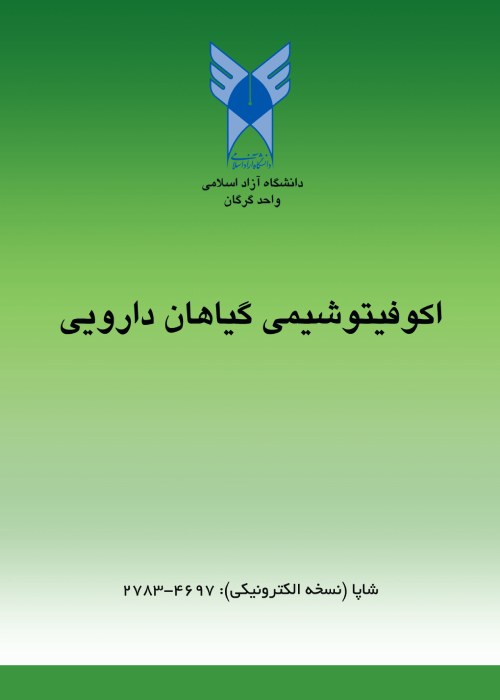Phytochemical and antioxidant activity of some genotypes of Morus alba L. Var. Nigra in West and East Azerbaijan province
Author(s):
Article Type:
Research/Original Article (دارای رتبه معتبر)
Abstract:
Blackberry (Morus alba L. Var. Nigra) has phytochemical compounds and antioxidant activity. In the present study, the fruits of four blackberry genotypes were harvested from two West and East Azerbaijan in mid-July 2017 . Phytochemical indices were evaluated based on the content of total phenol (folate sizing method), total anthocyanin (absorption difference method at different pHs) and antioxidant activity (DPPH). To separate, identify and determine the amount of phenolic acids and sugars a high-performance liquid chromatography device (HPLC) was used. Data analysis was performed by Duncan's multiple range test at the probability level of 1%. According to the variance analysis results, the measured traits were significant at the level of 1% and a high diversity was observed among the measured traits. The highest amount of antioxidants was 78.04 %, total anthocyanin and total phenol were 6.24 mg/ml and 925.98 mg/100 g fresh weight equivalent to gallic acid, respectively. In the current study, 9 polyphenolic compounds were identified in the fruit extract by HPLC. The main constituents included chlorogenic acid (60.060), coumaric acid (8.807) and caffeic acid (3.657) microgram per gram. In addition, in extracts, cinnamic acid (0.355), rosemary acid (0.055), gallic acid (2.59), rutin (0.833), apagenin (2.700), quercetin (1.861) microgram per gram were identified and also two sugars of fructose (5.84) and glucose (6.31) g per 100 g of fresh weight were reported. The results showed that in all genotypes, glucose was higher than fructose. The first genotype with the highest amount of antioxidant capacity, fructose, total phenol, caffeic acid, chlorogenic acid, quercetin and apagenin was introduced as the superior breed. The findings of this study is useful for understanding the diversity and efforts to select berries for breeding as well as for the food industry in selecting cultivars with high nutritional properties.
Keywords:
Language:
Persian
Published:
ECO phytochemistry of medicinal plants, Volume:10 Issue: 3, 2022
Pages:
56 to 68
magiran.com/p2517346
دانلود و مطالعه متن این مقاله با یکی از روشهای زیر امکان پذیر است:
اشتراک شخصی
با عضویت و پرداخت آنلاین حق اشتراک یکساله به مبلغ 1,390,000ريال میتوانید 70 عنوان مطلب دانلود کنید!
اشتراک سازمانی
به کتابخانه دانشگاه یا محل کار خود پیشنهاد کنید تا اشتراک سازمانی این پایگاه را برای دسترسی نامحدود همه کاربران به متن مطالب تهیه نمایند!
توجه!
- حق عضویت دریافتی صرف حمایت از نشریات عضو و نگهداری، تکمیل و توسعه مگیران میشود.
- پرداخت حق اشتراک و دانلود مقالات اجازه بازنشر آن در سایر رسانههای چاپی و دیجیتال را به کاربر نمیدهد.
In order to view content subscription is required
Personal subscription
Subscribe magiran.com for 70 € euros via PayPal and download 70 articles during a year.
Organization subscription
Please contact us to subscribe your university or library for unlimited access!


